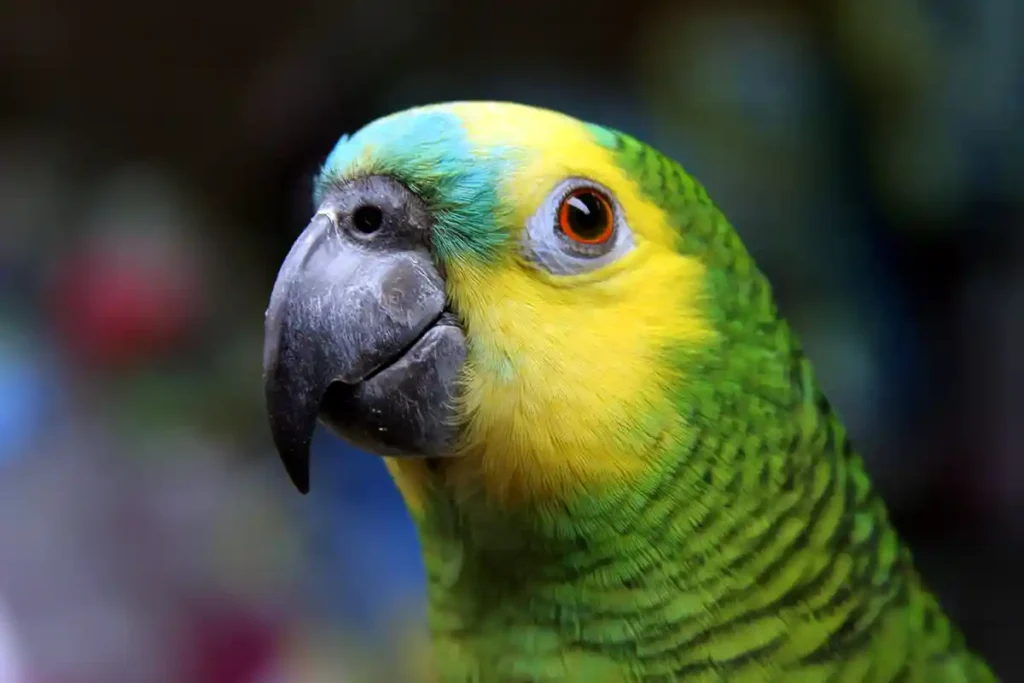
Have you ever been enchanted by the vibrant, tropical allure of the Blue-fronted Amazon parrot (Amazona aestiva)? Known for their lively personalities and strikingly beautiful plumage, these birds are a marvel to behold. Native to South America, they are a common choice as a pet bird among bird lovers worldwide. But there’s more to these birds than meets the human eye.
Understanding the Blue-fronted Amazon
Scientific Classification
The Blue-fronted Amazon, also known as the Turquoise-fronted Amazon and Amazona aestiva, is a member of the Amazon parrot family. This species has two subspecies: Amazona aestiva aestiva and Amazona aestiva xanthopteryx. The latter is notable for the yellow patches on its shoulder and is mainly found in Northern Argentina.
Description and Physical Characteristics
On average, the turquoise-fronted Amazon reaches an adult size of 14-15 inches in length. It has a predominantly green body, with brilliant blue feathers gracing its forehead and turquoise hues on its face and crown. The bird’s beak is robust and a strong grey-black, perfect for cracking open nuts and seeds. Its eyes are encircled by white rings, giving them a distinctive appearance.
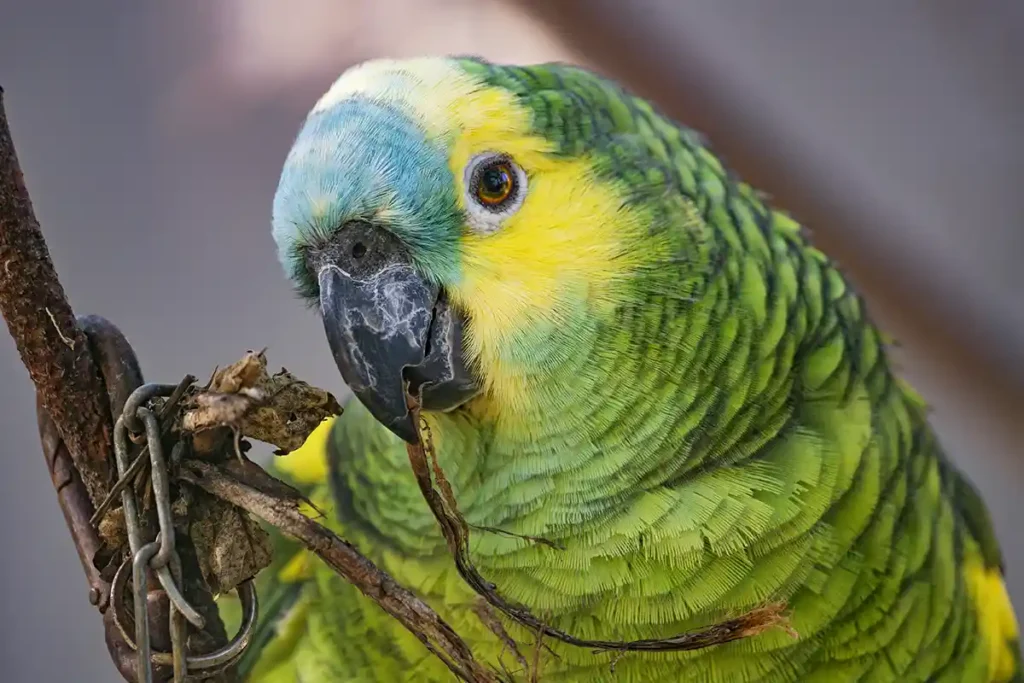
Distribution and Habitat
The Blue-fronted Amazon lives in south american countries, with populations mainly found in Brazil, Paraguay, Bolivia, and Argentina. These parrots inhabit a range of flora environments, from humid forests to dry savannas. They can often be spotted in tree cavities, their preferred nesting sites.
Behaviour and Lifestyle
Blue-fronted Amazons are known for their social nature. In the wild, they are often seen in flocks, especially outside the mating season. These birds have a loud call, which they use for various forms of communication within their group.
While appreciating the marvels of the these parrots, it’s worth noting that this species should not be confused with the Blue-headed Parrot. Although both birds share similar names, they’re distinct species with different traits and habitats. Always make sure to verify the species when dealing with these exotic birds to avoid any misidentification.
Diet and Feeding Habits
In the wild, the Blue-fronted Amazon parrot has a diverse diet. It feeds mainly on seeds, nuts, fruits, and berries. In captivity, owners should provide a balanced diet, including a seed mix, fresh fruits, and vegetables.
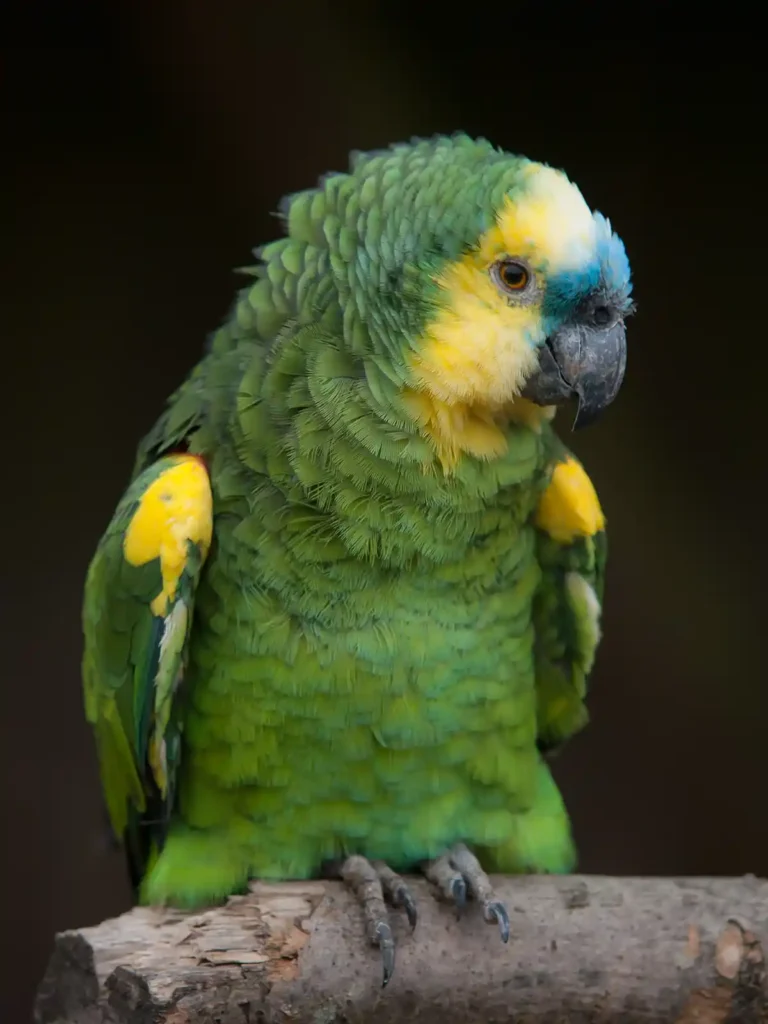
Detailed Look at the Blue-fronted Amazon
Notable Features
One notable feature of this bird is its beautiful plumage. The feathers on the head and face can range from turquoise to blue, while the body is mostly covered in a vibrant green. Distinct yellow patches can also be found on their shoulders, adding to their colorful appearance. Interestingly, there’s no apparent sexual dimorphism in this species, meaning males and females look quite similar to the untrained eye. However, DNA testing or spectrometry can accurately determine the sex of these birds.
Blue-fronted Amazon in the Wild
In the wild, turquoise-fronted Amazon parrots are known to be quite active during the day, spending their time foraging for food, interacting with each other, or simply basking in the sun. These birds have been spotted in various parts of South America, from the forests of Mato Grosso in Brazil to the woodland savannas of Northern Argentina. Their habitat range is diverse, as they can adapt to different flora environments.
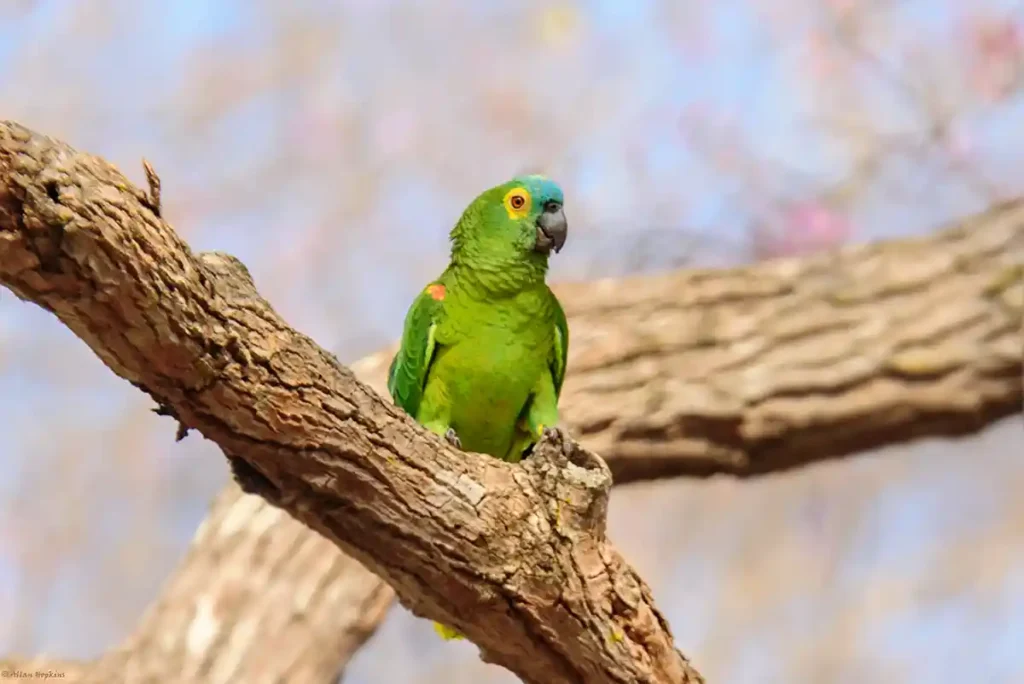
Breeding and Reproduction
Breeding season for the Blue-fronted Amazon usually takes place from October to April, depending on the region. The female lays between two to four eggs in the nest, often located in tree cavities. After an incubation period of about 26-28 days, the chicks hatch. The parents take care of the chicks until they fledge, which takes about 60 days.
Health and Lifespan
The turquoise-fronted Amazon has an average lifespan of 40-60 years, both in the wild and in captivity. However, like all pet birds, they can face common health problems, such as infections or dietary deficiencies. Regular vet check-ups and a balanced diet can ensure that your bird stays healthy and happy for many years.
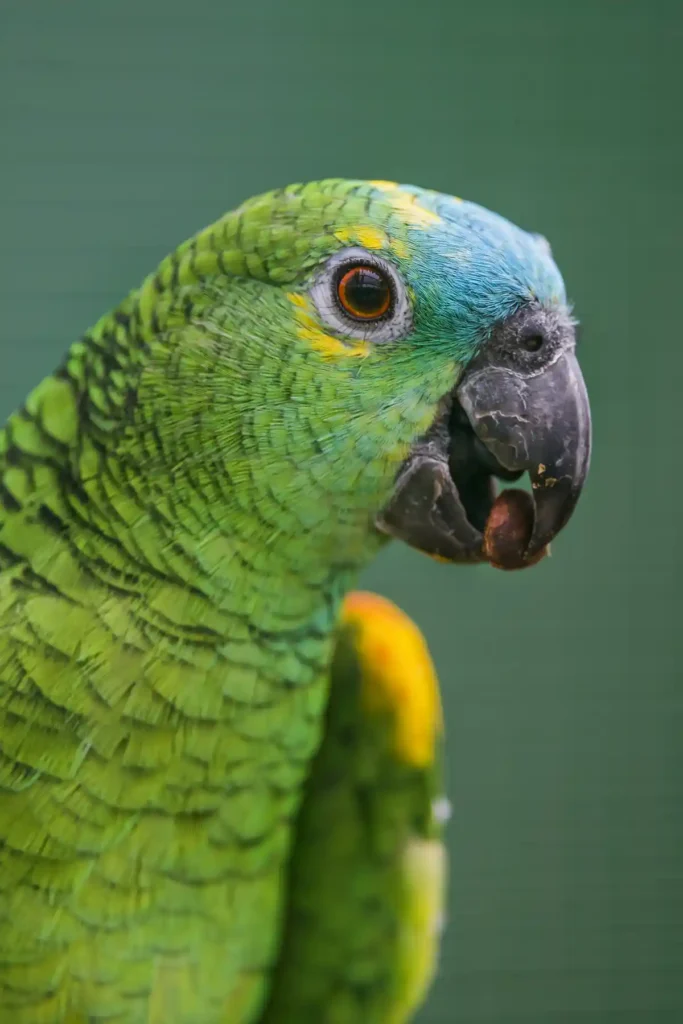
The Blue-fronted Amazon as a Pet
The Blue-fronted Amazon is a popular choice as a pet due to its playful personality and impressive vocal abilities. These birds are known for their intelligence and sociability. They enjoy interaction and can form a strong bond with their owners. However, they also require plenty of attention and mental stimulation, so be prepared for a pet that’s both entertaining and demanding.
When it comes to care and maintenance, these birds require a spacious cage with plenty of climbing room. As they are active and playful, providing them with toys and perches will keep them entertained. Their diet should consist of a balanced mix of fruits, vegetables, and bird-safe seeds. Fresh water should always be available in a clean water bowl.
The main advantage of having a turquoise-fronted Amazon as a pet is their social and playful nature. They can provide endless entertainment and companionship. However, they also require considerable care, attention, and long-term commitment. They are also known to be quite vocal, which might not be ideal for those seeking a quieter bird.
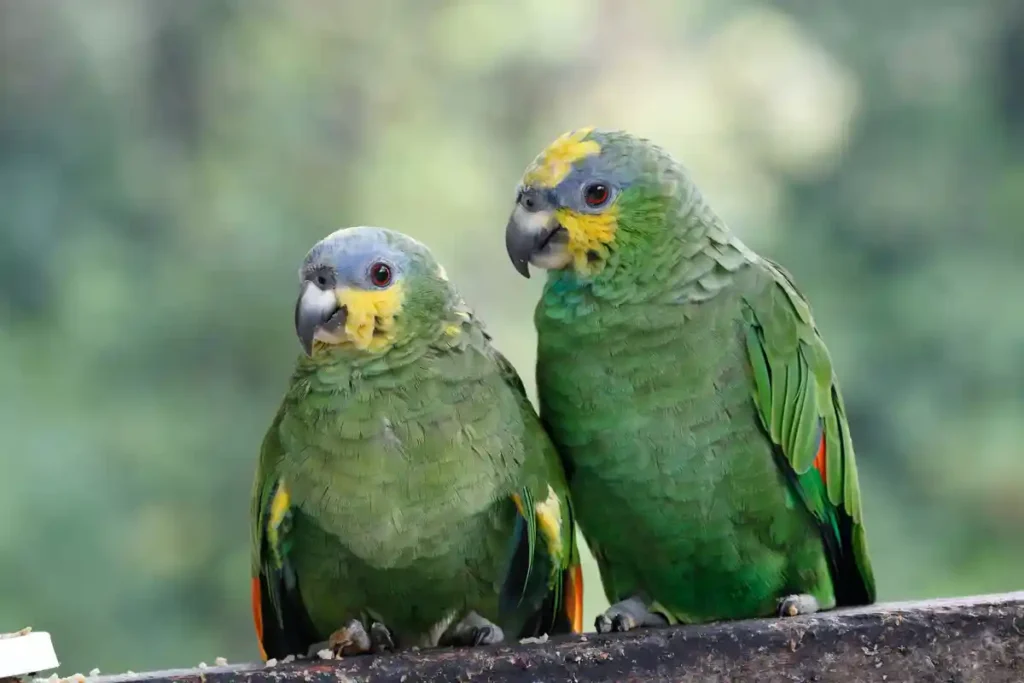
Conservation Status
Despite being widespread, the Blue-fronted Amazon faces threats from habitat loss, illegal pet trade, and population decline. In certain areas, they are also viewed as crop pests, leading to conflict with local farmers.
Conservation efforts for the Blue-fronted Amazon include habitat protection and regulation of trade. The species is listed in Appendix II of CITES, meaning that the international trade of these birds is closely monitored. Organizations like BirdLife International are also involved in the conservation of these birds and their habitats.
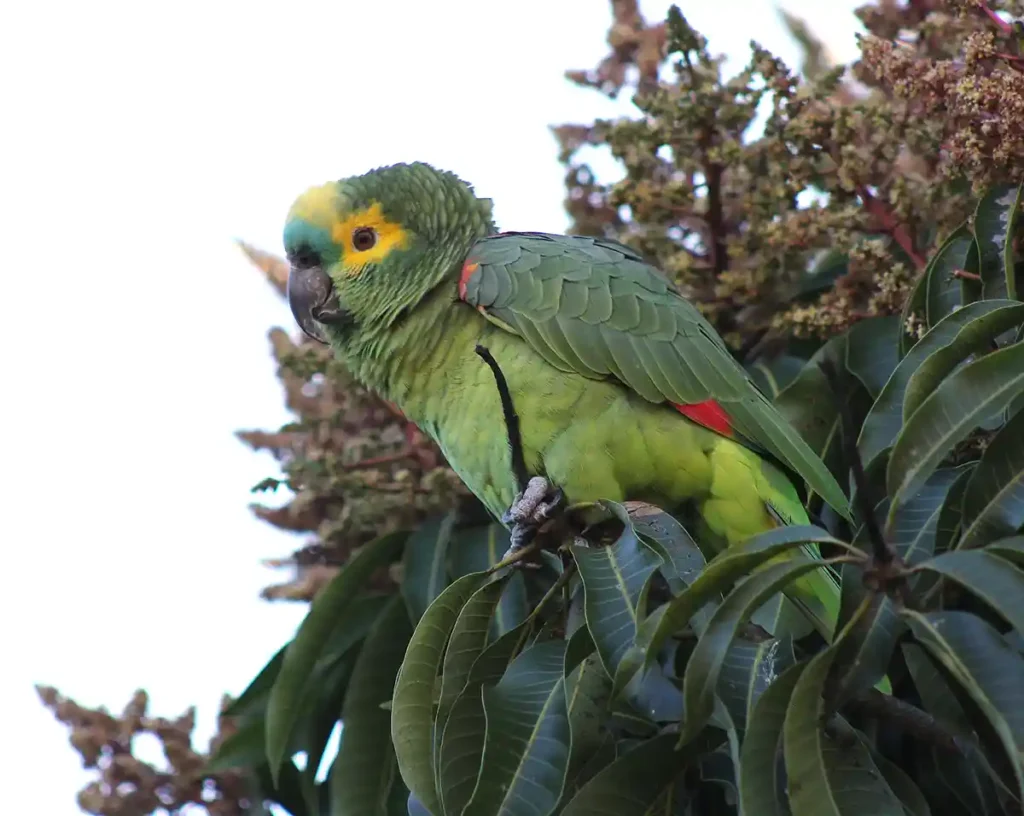
Conclusion
The Blue-fronted Amazon is a fascinating bird, filled with color, charisma, and charm. Whether in the wild or as a pet, they bring joy and vibrancy wherever they are. As we continue to learn more about these birds, it’s essential to ensure their conservation for future generations to appreciate. Remember, every bird matters, and every effort counts in preserving these remarkable creatures of nature.
